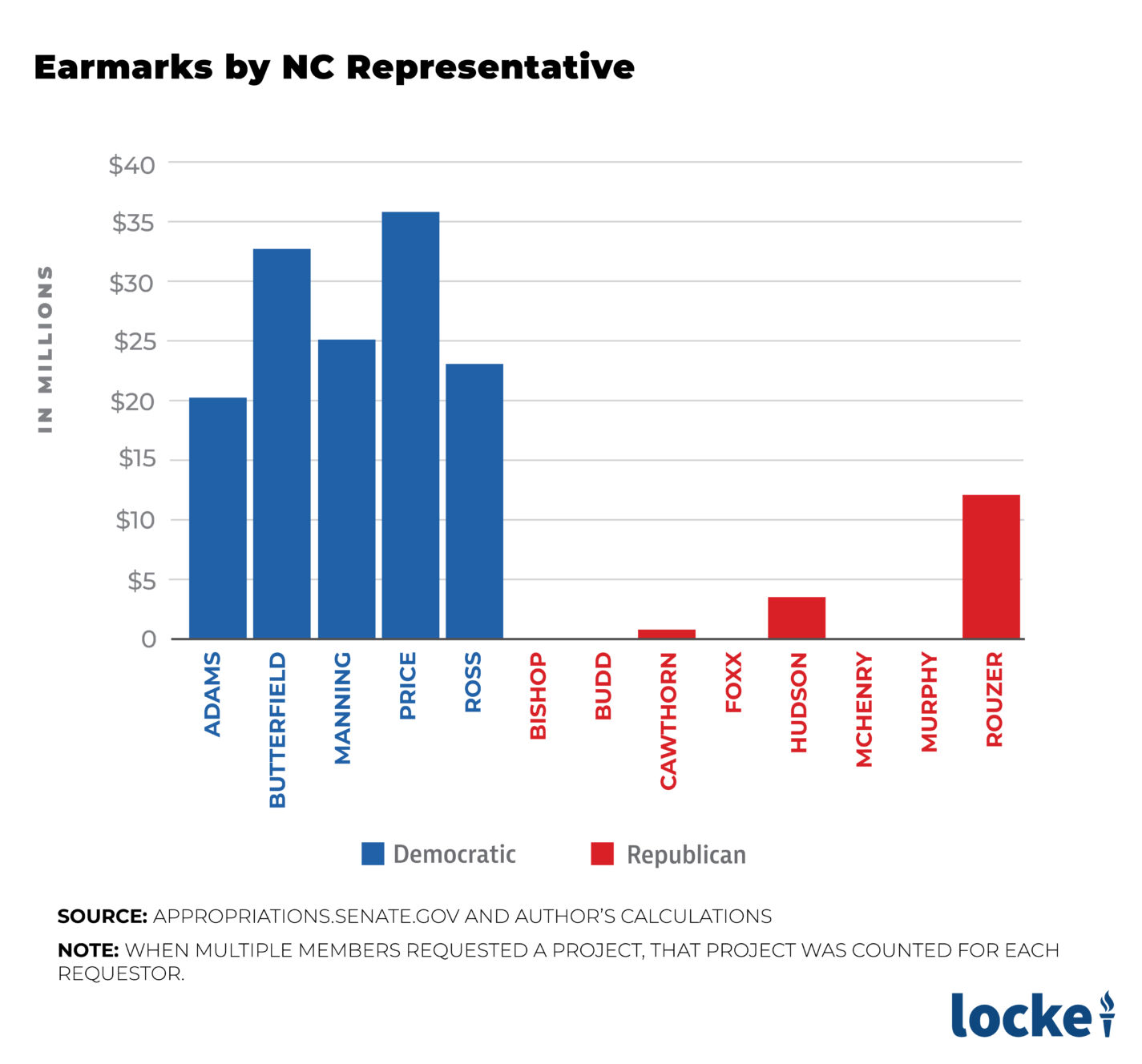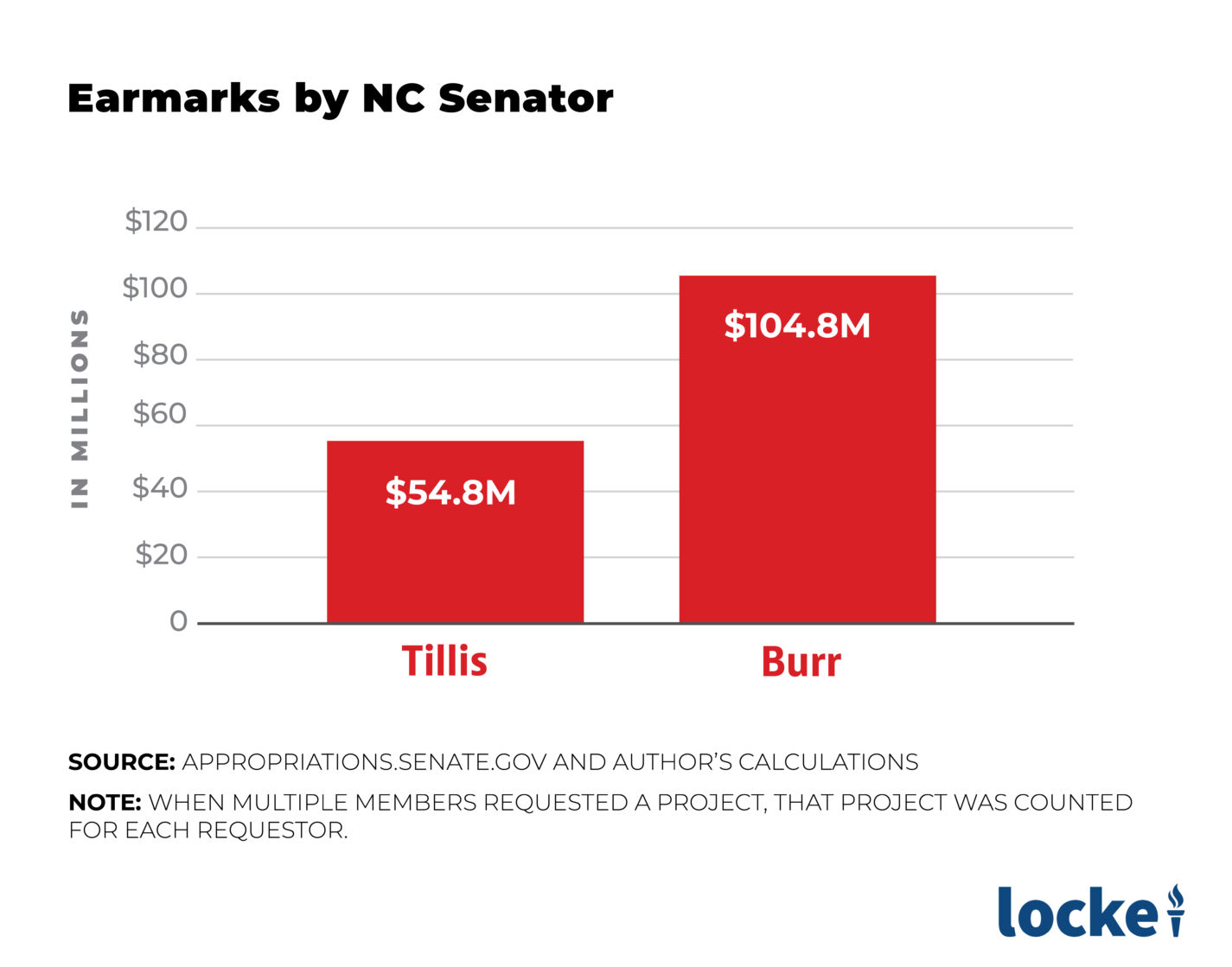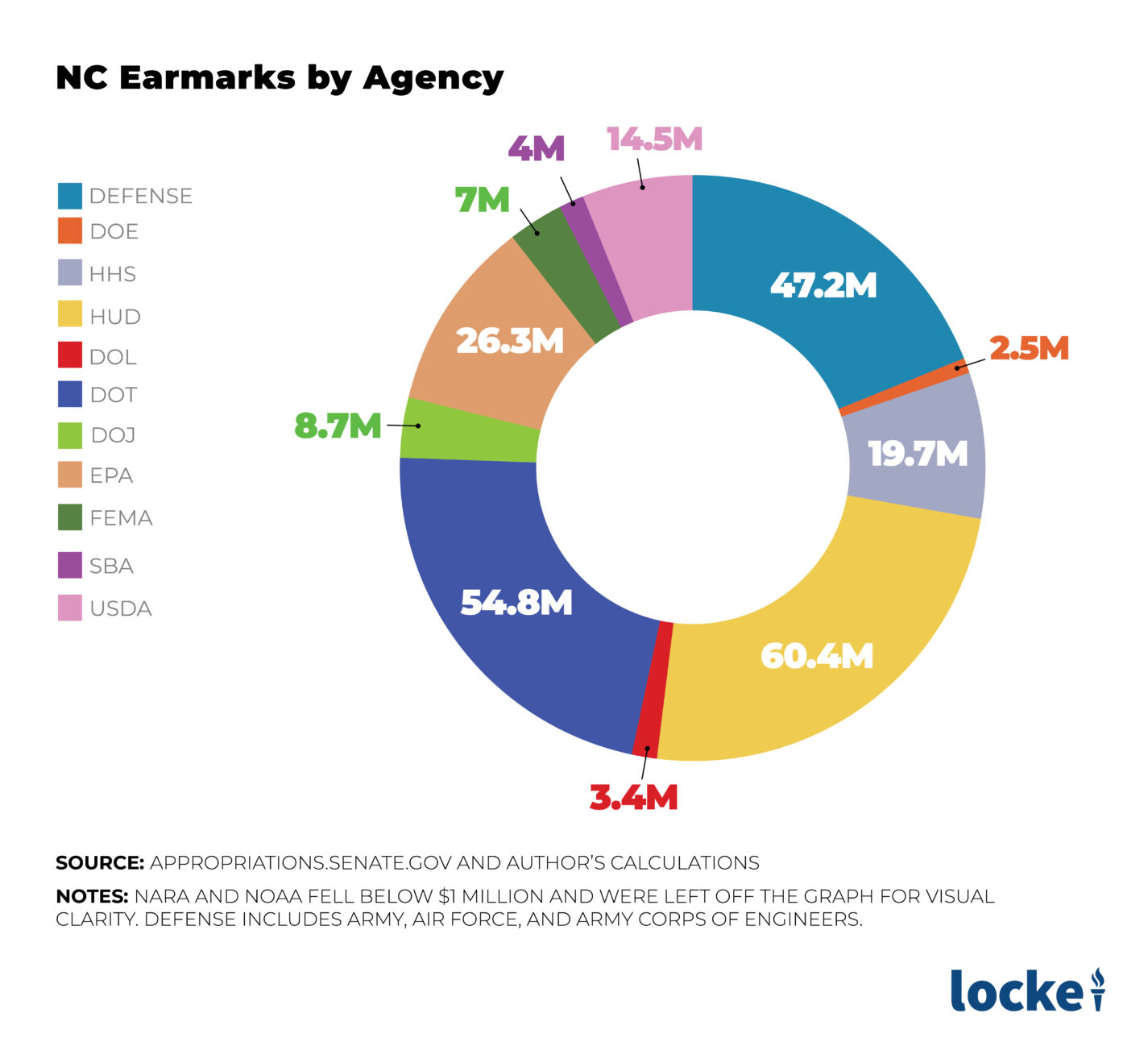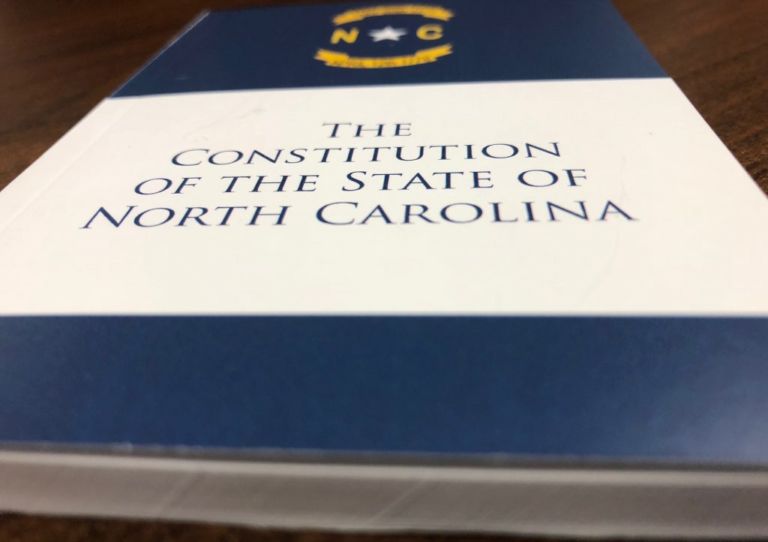- North Carolina’s representatives in Congress secured almost $250 million in pork spending in the latest federal spending omnibus bill
- While the process for finding federal earmarks is cumbersome and far from transparent, listing members next to their requested project allows for some transparency, curbs some spending excesses, and provides accountability to taxpayers
- At the state level, North Carolina should lead on providing budget transparency by enacting the Insko Rule
Last month’s lame-duck Congress rushed a $1.7 trillion spending omnibus through to law just after the American people voted out the House majority. Lawmakers brought more than 7,200 earmarks worth $15 billion home to their states and districts. It contained significantly more earmarks than the previous spending package (4,962 earmarks totaling $9 billion).
As I explained in my article about last year’s federal spending bill, earmarks are legislative provisions that direct federal dollars to pet projects at the request of a specific lawmaker. These projects circumvent federal agencies and their grant processes and undermine state and local decision-making.
Earmarks have no public oversight nor accountability for determining whether the spending is really necessary. No information about these projects is released beforehand, and often analysts must filter through the bill text itself to find them. This latest bill was particularly egregious, given how quickly it was rushed to a vote. Lawmakers did not have nearly enough time to read through the 4,155-page bill.
Ten North Carolina members of Congress requested nearly $250 million in earmarks.
Even so, some Democrats champion the use of earmarks. Outgoing House Appropriations Chairwoman Rosa DeLauro bragged about the high spending, saying the bill “fulfills 98 percent of the Democrat [m]ember requests in the House.”
In North Carolina, no Republican member of Congress voted to support the federal spending bill, while each Democrat voted in favor of the bill. Even so, North Carolina Republicans were among those who requested earmarks.
To tally the earmarks (compiled here), I manually pulled the data from the 12 separate explanatory statements accompanying the bill. Ten North Carolina members of Congress requested nearly $250 million in earmarks. The ten members were: Rep. Alma Adams (D-NC-12), Rep. G.K. Butterfield (D-NC-1), Rep. Madison Cawthorn (R-NC-11), Rep. Kathy Manning (D-NC-6), Rep. David Price (D-NC-4), Rep. Deborah Ross (D-NC-2), Rep. David Rouzer (R-NC-7), Rep. Richard Hudson (D-NC-9), Sen. Richard Burr (R-NC), and Sen. Thom Tillis (R-NC).
The 109 projects varied in size from $75,000 to help fund utility vehicles at a local fire department to $12.3 million for pavement rehabilitation on US-64.
The charts below provide an overview of earmarks by North Carolina member and subject area.



The number of earmarks requested by North Carolina’s congressional delegation grew by 49%, and the cost to taxpayers increased by 15.6% from last year.
Some earmarks are worse than others. While some are projects that should be funded at the local level, such as improvements to a senior center, others should not be funded by taxpayers at all, such as restorations for the Carolina Theatre.
Some of the earmarks may indeed be for worthy causes, but that doesn’t mean they should be funded by taxpayers. Government grows out of control when expenditures are not restricted to legitimate core functions. Taxpayers are already being crushed by inflation; now they are being expected to pay for frivolous projects or items that should be funded locally.
Earmarks are generally a misuse of taxpayer dollars. Additional constraints are certainly necessary, but the earmark spending would be even higher if lawmakers were not held accountable for them by name.
Why the General Assembly needs the Insko Rule
At the state level, here is one common-sense improvement that should be made this legislative session: require members to be listed next to their pork spending projects.
The federal spending bill’s record level of earmarks is partially attributable to the partisan Congress, which might increase the need to cut more deals across party lines.
At the state level, North Carolina’s new General Assembly could be ripe for similar increases in pork spending. John Locke President Donald Bryson is sounding the alarm, saying his “fiscal concern is that lots of that trading can be made through ‘special provisions’ in the state budget process.” He continued, “To put it another way, if the state government is spending money on things that are not core government functions, then it is taxing citizens beyond what is necessary.”
The Insko Rule, filed in 2017 by now-retired Rep. Verla Insko (D-Orange), would change the budget process to bring transparency to pork spending. Under the Insko Rule, a legislator requesting a special provision — i.e., a pork project — would have his or her name attached to that provision.
North Carolina’s pork spending in the last two state budgets has been excessive. The most recent budget even established a “Local Project Reserve” to serve as a catch-all for pork projects. Better policymaking requires greater transparency and debate. In North Carolina, legislators should be held accountable for their pork spending requests, which must face public scrutiny. As I wrote for RealClear Policy last month, it’s time for North Carolina to lead on budget transparency.
It’s your tax dollars they are spending; you have a right to know who is wasting it.


